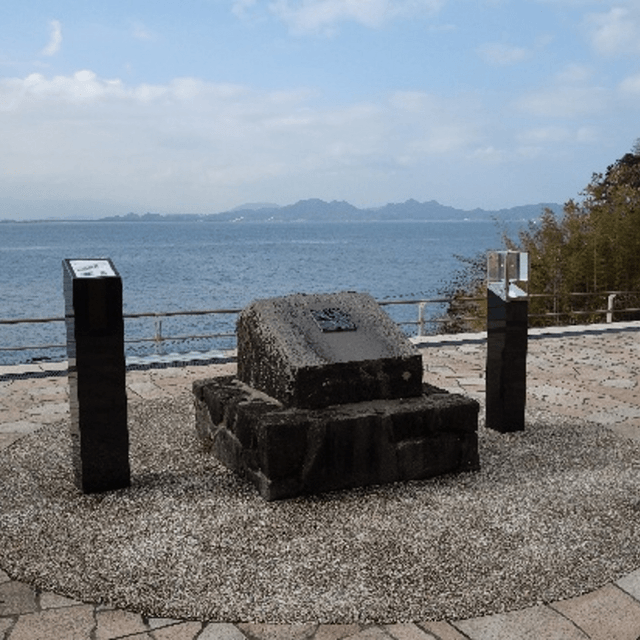
天明(てんめい)4(1784)年、志賀島の百姓甚兵衛が、大石の下から「漢委奴国王」(かんのわのなのこくおう)と刻まれた金印を発見したと伝えられる場所です。金印は西暦57年、後漢の光武帝が倭国の使者に与えたものと考えられており、現在は国宝に指定され、福岡市博物館に展示されています。
昭和48(1973)年に九州大学が、平成元(1988)年と5(1993)年には福岡市教育委員会がこの付近の調査を行いましたが、金印に関係する遺構は発見されていません。また古記録の調査でも、出土地や発見者について疑義が出されており、金印出土の経緯については、謎が多く残っています。
公園の入口には、「漢委奴國王金印発光之処」記念碑が建てられています。公園の頂上へは自転車で登ることもでき、海をはさんで能古島の也良岬を臨むビュースポットとなっています。
A park marking the place where, in Tenmei 4 (1784), a farmer from Shikanoshima named Jinbei is said to have discovered a gold seal engraved with the characters “漢委奴国王” (King of Na) The seal is thought to have been bestowed in 57 CE by Emperor Guangwu of the Later Han dynasty upon an envoy from Wa (ancient Japan as referred to by imperial China). Now designated a National Treasure, it is housed on display at the Fukuoka City Museum.
Kyushu University conducted a survey of the area in 1973 (Shōwa 48), and the Fukuoka City Board of Education carried out its own surveys in 1988 (Heisei 1) and 1993 (Heisei 5); however, no remains directly related to the gold seal were found. Research into old records has also raised questions about the discovery's exact location and discoverer, and many aspects of how the seal came to light remain shrouded in mystery.
At the park entrance stands a commemorative monument inscribed “漢委奴國王金印発光之処” (place where the King of Na gold seal was illuminated). You can cycle up to the top of the park, which serves as a scenic lookout across the sea toward Yara Cape on Nokonoshima Island.
スタンプを獲得すると、限定の壁紙をゲットできます。
スタンプを集めてね / Collect a stamp
限定の壁紙を獲得しました。
以下のボタンから壁紙を表示し、長押しで”写真”に保存してください。
